It’s an intimate moment. On this mid-morning in late May, the sun is just creeping through the hole in the top of the nesting box. The female American kestrel is quietly preening her feathers when the movement starts.
She shifts her weight, and the egg—one of four—rolls out, just visible beneath her white and brown breast feathers. The first real crack seems to excite this falcon mom, who has been brooding patiently over her four eggs for the last 29 days.
She rocks rapidly back and forth from foot to foot, pecking gently at a piece of shell that’s fallen to the floor of the nesting box. With a quick jerk of her head, she swallows some of the shell’s nutritious membrane, and then turns her attention to what’s slowly emerging.
With great effort, and much squirming, a whitish-pink, wet and feeble chick slumps sideways out of the remaining shell. The tiny chick lies writhing on its side, its eyes squeezed shut, beak gaping, and emits a frail chirp.
Although we can’t yet tell, this is a female kestrel, and over the next two days, she’ll be joined by three brothers. For these new siblings, the journey to becoming one of North America’s most charismatic raptors has begun.
Life for any baby bird is a gamble, though. The odds of survival are still far from certain. And this first month of life—the kestrels’ short and intense time together as a family—will be crucial in deciding their fate.
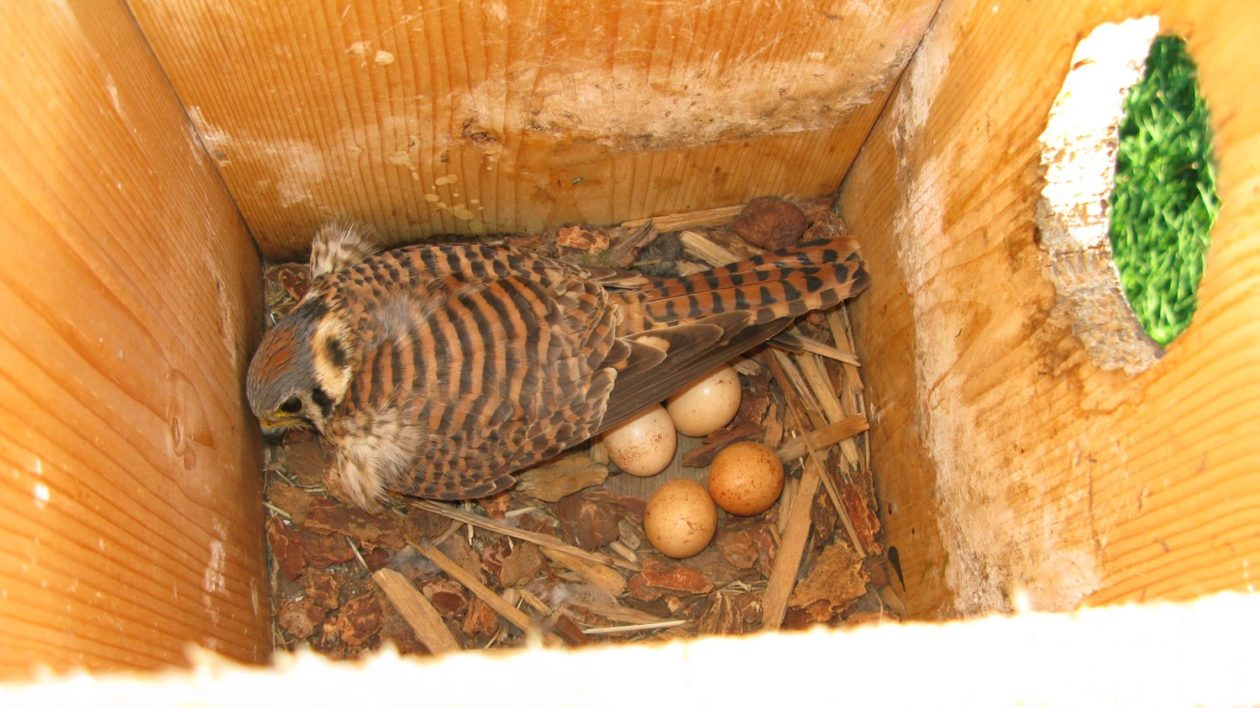
In nest cavities across the continent, a similar scene is unfolding this May and June. As a new generation of American kestrels makes their debut, they face a world—and habitat—that’s rapidly changing.
Let’s learn more about these small but mighty falcons, and the challenges they face, through the story of one female kestrel chick hatching at TNC’s Great Salt Lake Shorelands Preserve, just north of Salt Lake City. TNC has tracked kestrels at this 4,500-acre preserve for years, and you can watch this spring’s family right now on the live nest cam.
Hungry & Vulnerable
It’s been two days since the last egg hatched. That’s 48 hours of frequent parent feeding, frantic peeping, and a lot of group sleeping. The four chicks already look strikingly different. They are dry and puffy, with fine white down feathers that fuzz out from their growing bodies.
It’s hard to believe that just days ago they fit inside of an egg that was barely larger than a quarter. The chicks are holding their heads upright now and their eyes—large and gleaming black against their tiny skulls—are open and alert to movement. Food and warmth are paramount. Mom and Dad bring voles and mice three to four times a day, carefully ripping off tiny pieces and doling them out, straight into the open, pink beaks that sway and bob unsteadily.
The chicks greedily consume twice as much food as their parents. In between feedings, and with some determined maneuvering, Mama kestrel broods on top of her chicks, blanketing them with the warmth of her breast. The female kestrel chick is thriving.
First out of the shell, she is already slightly larger than her brothers. This will continue as she matures; female kestrels are larger and weigh more than males. Inside the nesting box, size already matters—she can muscle her way to the top of the heap and stretch her neck out just a little further than her brothers, angling toward the food dangling from mom’s beak. The pushiest chick doesn’t miss a meal.
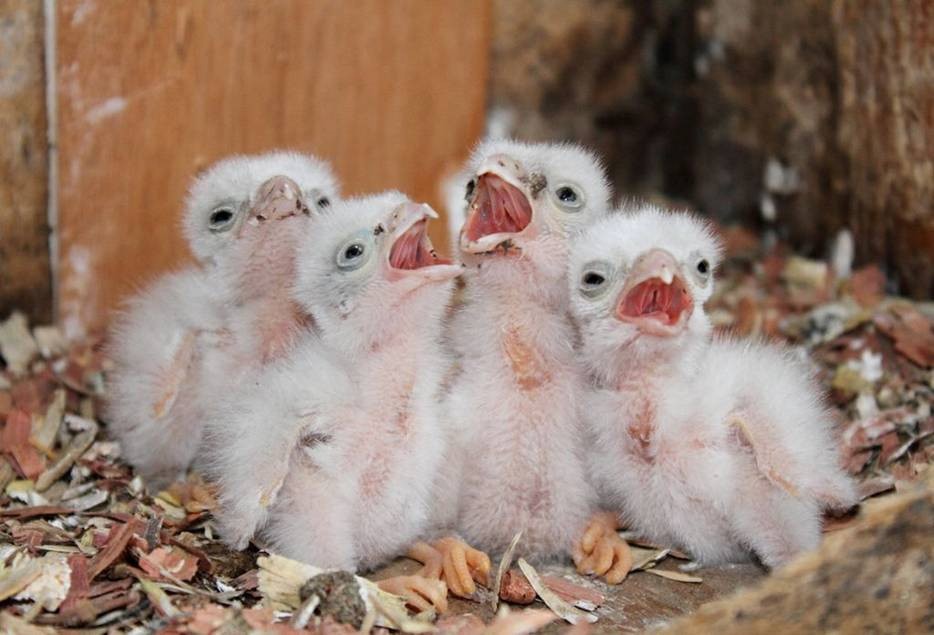
On the eighth night, the attack occurs. It’s past midnight. The soft hum of insects rises on a draught of cool air. Inside the nesting box, all is quiet.
The father kestrel has left to hunt. Mother kestrel’s head is tucked down as she covers the sleeping chicks. Two black spots on the back of her head, called ocelli, make it look as though she’s watching the hole at the top of the nesting box.
But her first warning is a sound, not a sight. It’s the swoop of a small barn owl’s wings as it lands, lunging into the nesting box. In the moonlight, the owl is a dazzling flash of white, with black eyes fixed, laser-like, on the kestrel and her helpless offspring. The battle is ferocious but short.
Sharp talons tear at breast feathers. Wings beat violently. The owl is silent. The kestrel’s defense cries are shrill. In the heat of the melee, the chicks, in a heap, are stepped on and battered by wingtips. Then it’s over.
The mother kestrel is left perched at the nesting box hole, peering into the empty night sky. Her wings and tail feathers are still splayed taught and wide to block the entrance; her breast heaves.
The owl is gone. And so is one of the male chicks.
The next week is quieter—and better—for the shrunken kestrel family.
The remaining chicks are getting rowdier, lurching around the nesting box on wobbly legs, flapping wings raucously and snatching food assertively right out of mom’s beak when she arrives with a meal.
Father kestrel begins to leave a whole mouse right on the floor of the box, instead of serving it, and the chicks gamely practice eating on their own. They squabble over control of the carcass. Space is getting tight. The box suddenly seems much smaller, and smellier, as the flourishing chicks have white-washed the walls with excrement.
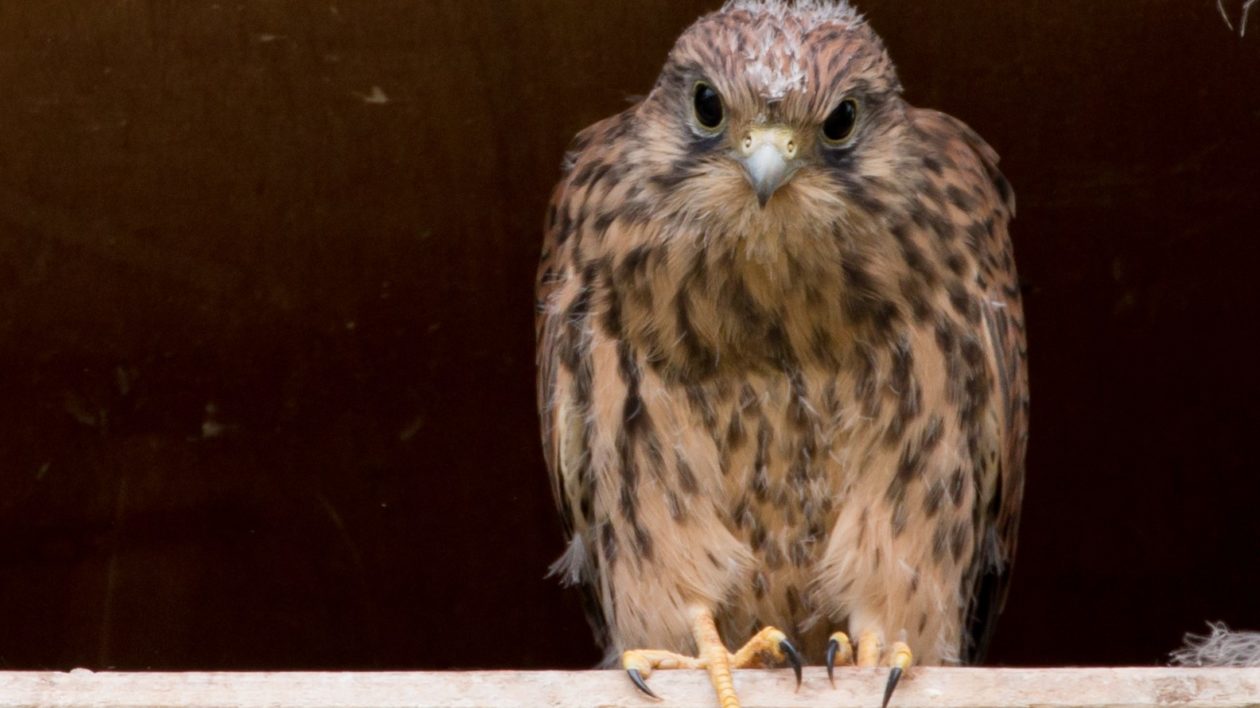
A Bird’s Eye View—Beyond the Box
By now, we can truly see the difference between the female and males. The chicks’ feather sheaths have started to appear as the downy fuzz gives way to feathers with tell-tale colors.
The American kestrel is one of only three raptors in North American that is sexually dimorphic in its plumage, meaning males and females look very different from each other. On the male chicks, we can see a hint of slate-blue on the wings.
The female chick, who hatched first and is slightly more mature than her brothers, shows red-brown feathers over all of her back and wings. She still rules the siblings as the largest and most feisty. She seems louder too, although all three chicks are hearty vocalists, especially at mealtime.
Day 17 is big. As mom departs for a morning hunt, the female kestrel chick makes a bold flapping leap up and lands precariously, teetering on the edge of the nest-box entrance. Her long slender toes steady her.
For the first time, she glimpses life beyond the nesting box walls, watching intently as her mother soars over the greening upland grasses and alights on the top of a fence post in the distance. The juvenile chick bobs her head repeatedly as she absorbs this new reality, her keen eyes judging distances and tracking the many movements in the vast world that has materialized before her.
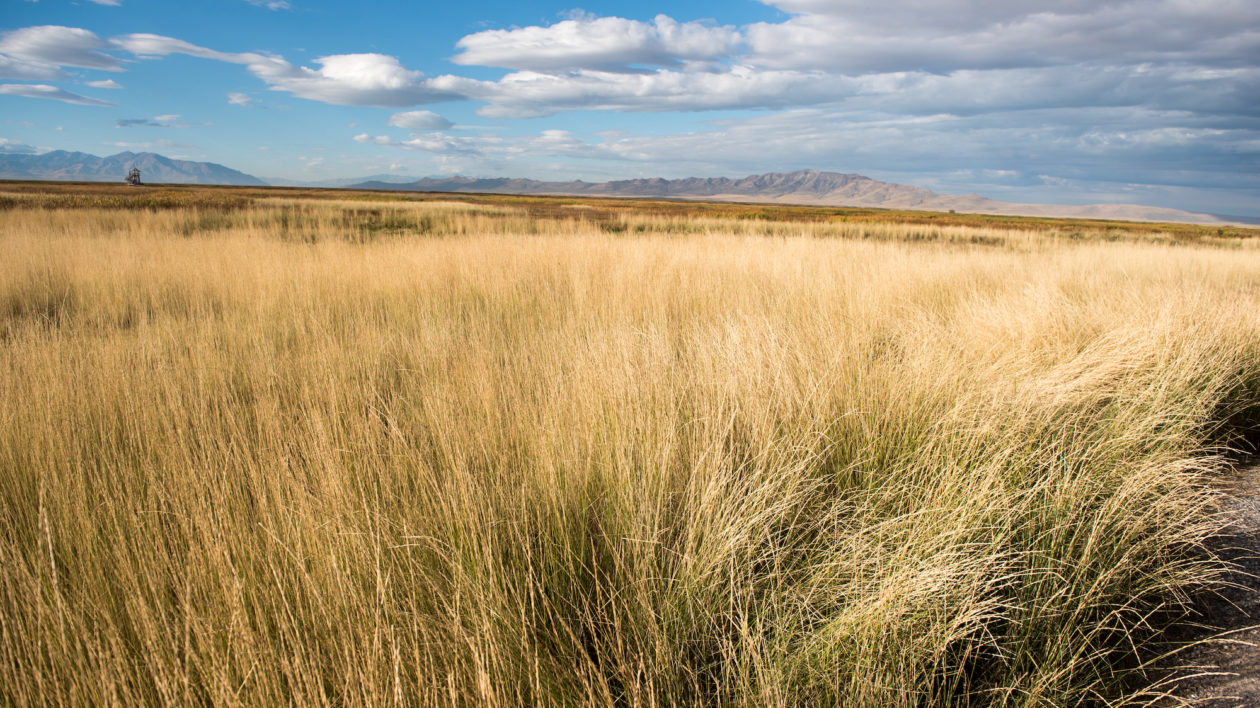
She is lucky. This is a good place to start life. TNC’s Great Salt Lake Shorelands Preserve provides ideal kestrel habitat. Spanning 11 miles along the Lake’s eastern shore, the preserve is a mix of salt and freshwater marshes, ponds and mudflats that draw migratory shorebirds.
The preserve also offers hundreds of acres of uplands, open meadows, and grasses. A rich kestrel buffet thrives here—from insects and snakes to voles, mice and dragonflies and grasshoppers.
There are cottonwoods and willows in the riparian areas, which offer potential nest cavities and good crevices for the kestrel parents to stash away kills and save the food for later. For kestrels across North America, places like this are increasingly rare.
Although the species is widespread, scientists are tracking a problem. Population data collected by HawkWatch International, and corroborated by other researchers, indicate long-term declines of American Kestrel populations. Researchers are still working to determine why the kestrel numbers are dropping, but the loss of the open habitat kestrels need for hunting, the loss of places to nest, and even contamination by pollutants or pesticides are all possible causes.
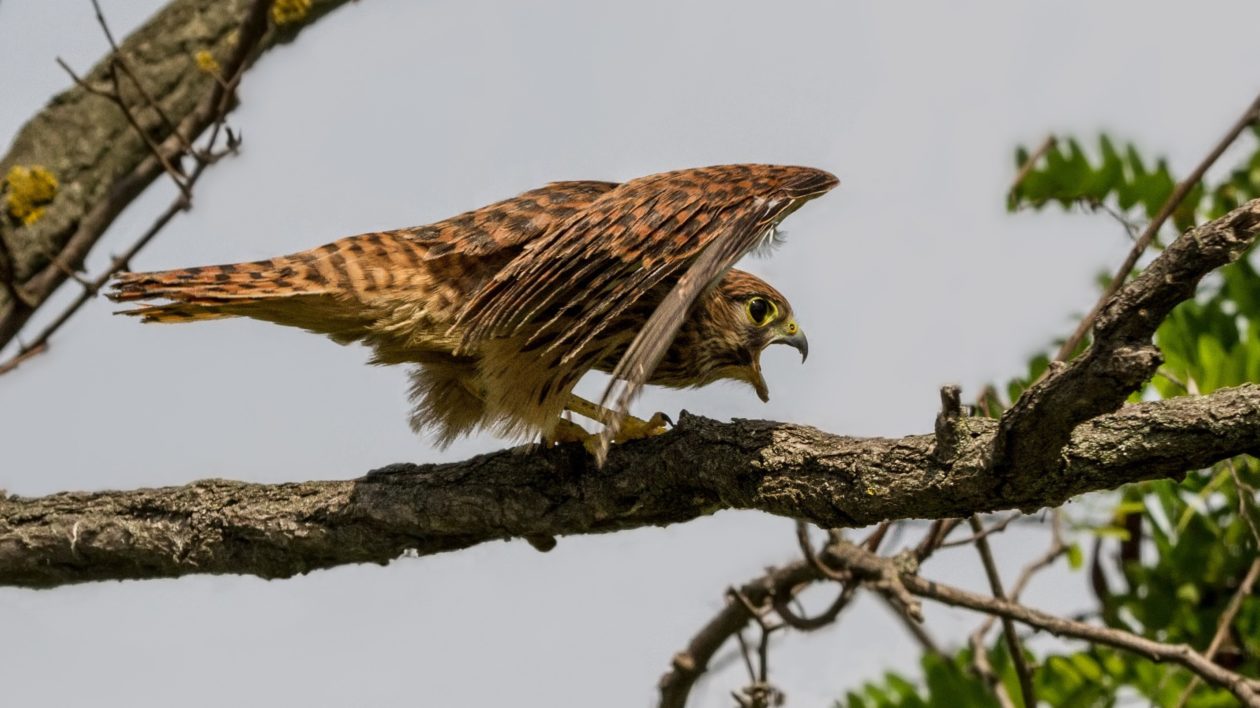
Cleared for Lift-Off
At this point, for the female kestrel chick and her brothers, the confines of the nesting box are becoming a true challenge. Cozy has turned to stifling. The urge to “fly the coop” is growing palpable.
Now 25 days past hatching, these boisterous juveniles look quite a bit like their parents. They work each other up at feeding time, and wrangle over who gets to perch at the entrance hole and peer into the tantalizing landscape beyond. For mom and dad, a new and critical phase of teaching—and a new test of survival—is about to begin.
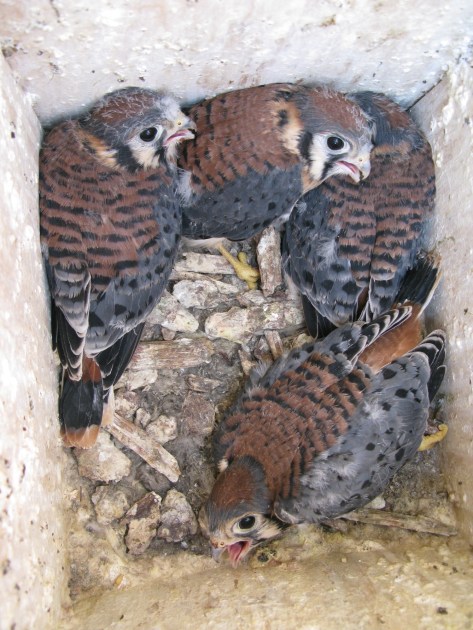
A clear and high-pitched “klee, klee, klee” rings out from the box on a cloudy afternoon, as our female chick readies herself. There was never any doubt she’d be first. Since morning, she’s leaned out of the nesting box hole a least a hundred times—watching and testing.
The moment of fledging is quick. With rapid flaps, she makes a heart-racing flight to the branch of a nearby cottonwood. Perched there, she pumps her tail energetically, looking a bit stunned. This is day 30.
Her brothers will soon follow her lead, making short flights to nearby trees or fence posts, and then returning to the nesting box. Over the next few days, the novice flyers gradually gain confidence in the amazing raptor abilities they were born to use.
Watching a kestrel in flight is a transfixing experience. These small falcons, the size of a mourning dove when full-grown, are experts at hovering. Given a good headwind, they can hang in the air, suspended like a helicopter in one spot, as they scan the ground for prey. Buffeted by the wind, they are maneuvering every part of their small bodies—wings, tail, feet—to hold their air position. It’s an incredible feat of power and stamina.
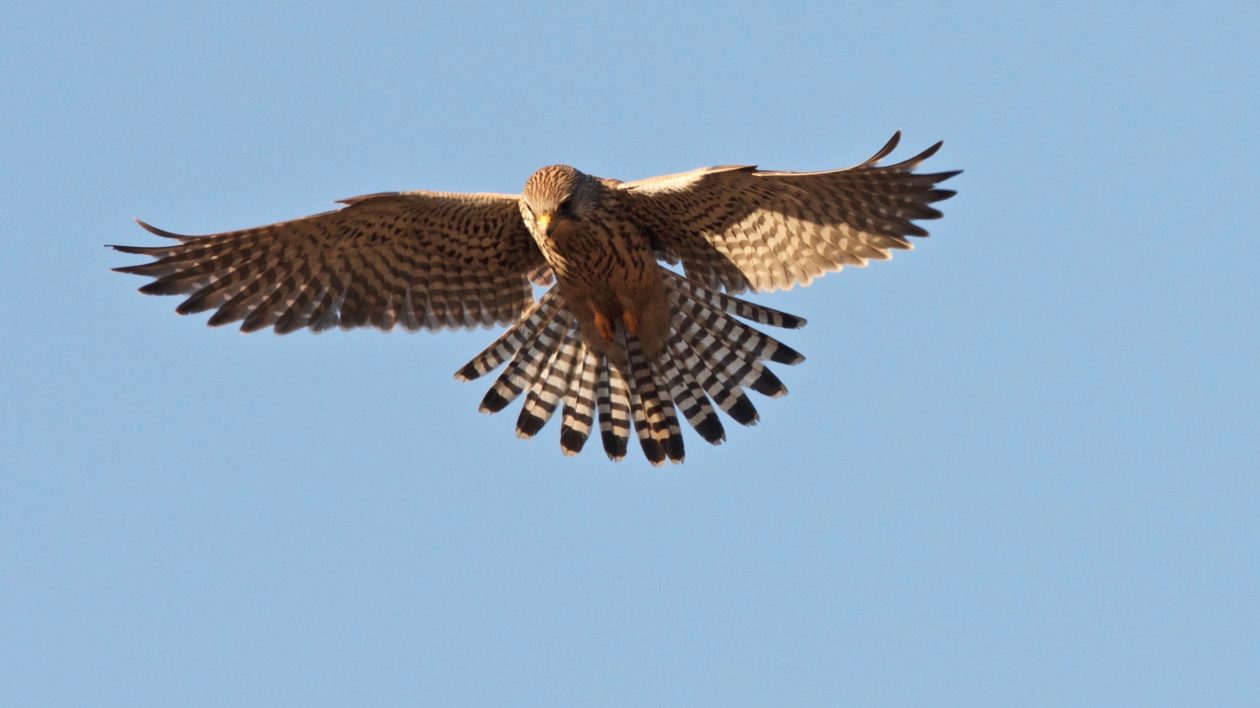
For our young female kestrel, though, a different form of hunting is mastered first. Perched on the top of a telephone pole, scanning the ground below, she sees something you and I do not.
It’s a crisscrossing maze of ultraviolet lines: urine trails from the thousands of voles and mice making their way through the grasses. According to the National Wildlife Federation, “With the exception of night-flying birds such as owls, the eyes of most birds probably are even more sensitive to ultraviolet light than they are to what we call visible light.”
The freshest urine trails are the brightest—and they tell our female kestrel that she is in good hunting grounds.
Suddenly, her eyes catch the flash of movement she’s been anticipating. Her dive is steep and fast. The ground rushes up and sharp grasses poke up into her wing feathers as her talons scrape against the dirt. Empty dirt. She flies a hundred yards down and lands on a fence post. She will try again. And again.
For the first few days, beetles are more her speed. Her brothers are not far—and neither are mom and dad. They are still a family unit, practicing together the skills the new falcons will need to make it on their own. For the next 10 to 12 days, the young female supplements her insect diet with the high-protein kills her dutiful parents share.
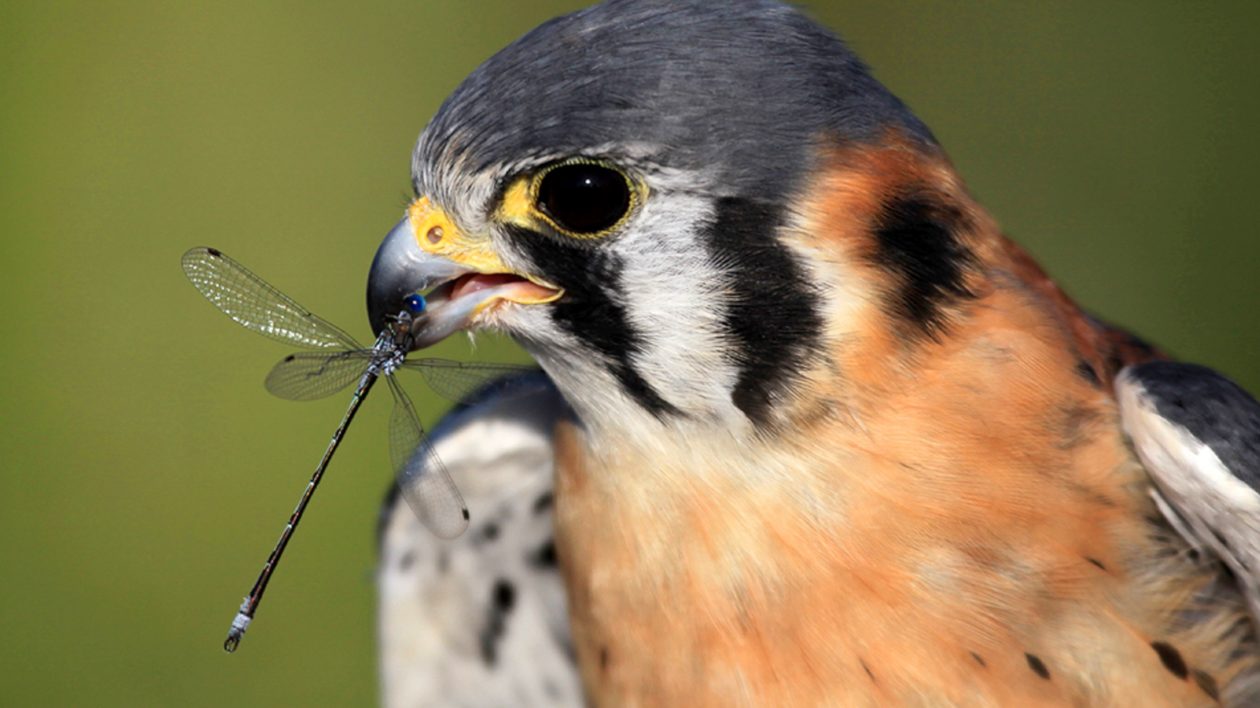
A New Raptor in the Skies
It’s only a matter of time, though. Everything in her body is designed for her to play her part. By the time her piercing talons finally snag the first field mouse, she has taken her place in the ecosystem.
She has grown into a small but formidable predator—a wonder of colorful plumage and lively avian personality. It’s time for the family to disband. For most of their lives, kestrels are solitary, coming together only for the fleeting and dramatic period of breeding and rearing.
Some couples will find each other again and again each spring, though, uniting for another go at the magical creation of life.
Will our female kestrel return here next spring? She may. Her need to move and migrate will be dictated largely by food sources and weather patterns. The year ahead of her is full of unknowns.
Blizzards, windstorms and drought can kill. Larger raptors like red-tailed hawks and barn owls pose constant threats. Humans, and their impacts on her survival needs, pose others. But she has already passed an important milestone—and completed an extraordinary journey from egg to falcon. A year from now, she will be ready to start her own family. And, with luck, her own daughter will soon swoop and hover over these same fields.
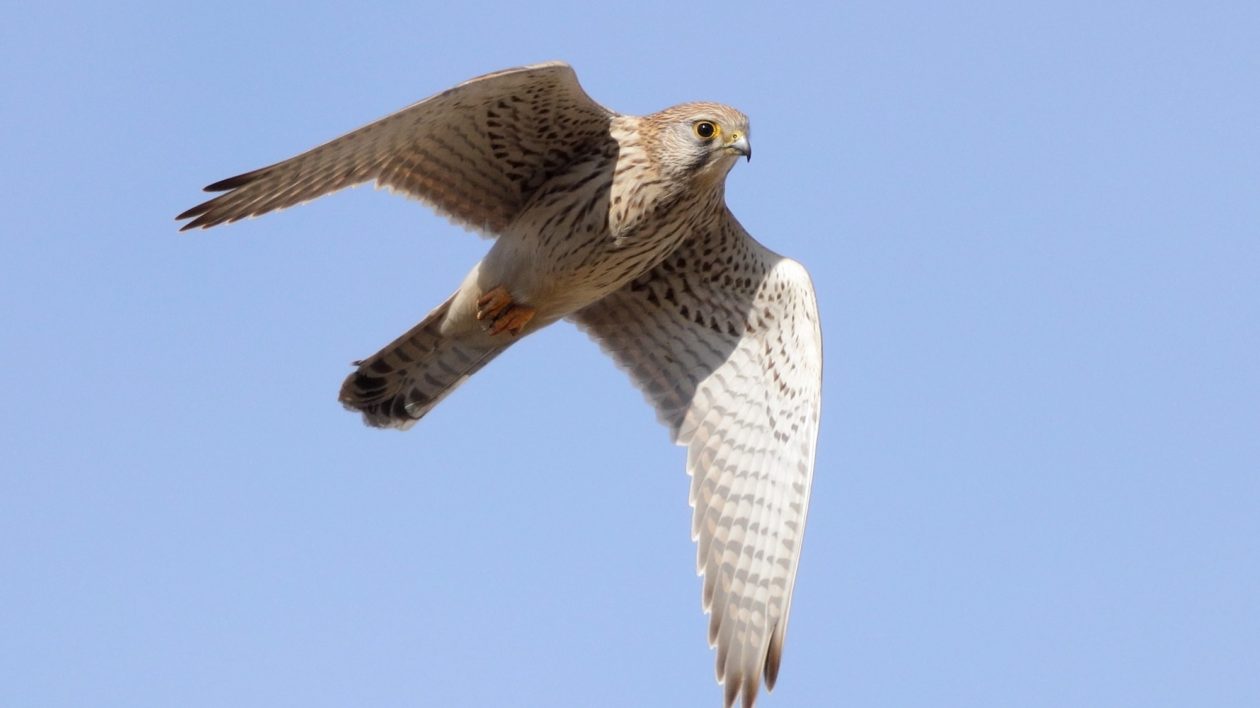
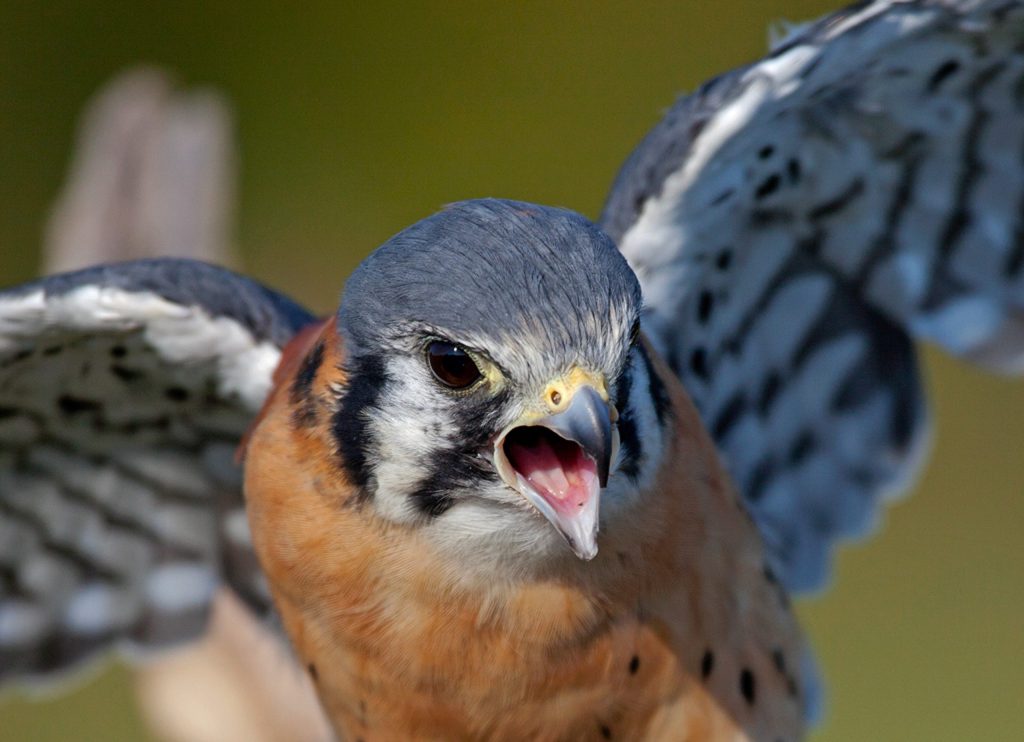



Love this article – it’s a great story. Question for you – are the images of a common kestrel? I’m not used to seeing AKs without the grey and red cap.
I certainly enjoyed the article on the Kestrel. What a beautiful little critter. I wanted to let U know how much I enjoy the information U folks pblish.
WOW! VERY INTERESTING……
My 1st experience with one of these beautiful raptors was a few years ago as it landed on the very top of one of our pine trees. I loved your story and can’t wait to visit this wonderful preserve. The drought is a great concern ?
Absolutely fabulous article! I was drawn in from the very beginning and am rooting for the kestrels and their chicks all the way through. The writing is both beautiful and accurate. The photos are incredible, as well.
Wonderful.